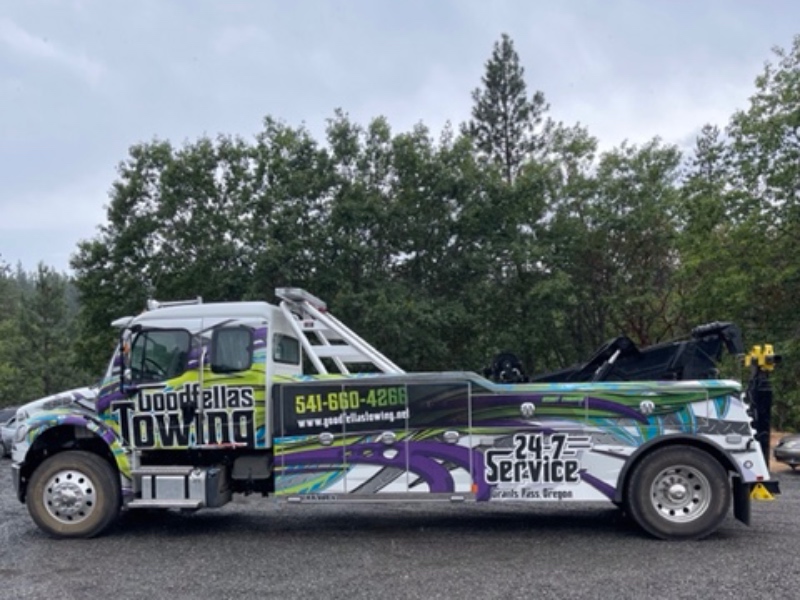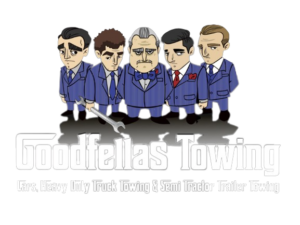A Critical Service to Keep Roads Clear
When accidents happen, recovery towing clears the mess and gets vehicles out of the way fast. A single-car spinout or a jackknifed semi can block traffic and turn a smooth commute into chaos. That’s when recovery towing keeps the highway moving and everyone safe. Dragging cars off the road is only part of the job. Recovery towing means carefully removing damaged vehicles from difficult spots while preventing further damage or delays. Take a look at what recovery towing actually is and how we get the most challenging I-5 accident recovery jobs done.

Light-Duty Recovery
Not every accident calls for heavy equipment. Light-duty recovery focuses on smaller vehicles like cars, motorcycles, and small trucks. If a vehicle is stuck in a ditch, involved in a fender-bender, or disabled on the shoulder, light-duty equipment is usually enough to handle it. Operators use wheel-lift tow trucks or flatbeds to secure the vehicle. In some cases, they’ll also use dollies to keep all wheels off the ground if the vehicle is immobilized.
Quick Action Prevents Traffic Build-Up
During each recovery service, operators responding to minor incidents need to act fast to avoid traffic jams. A flatbed truck is often the go-to option because it lifts the entire car off the ground, reducing the chance of further damage. These recoveries may seem straightforward, but in a high-pressure environment such as on busy highways, even small accidents need careful handling to avoid creating bigger problems.
Heavy-Duty Recovery
Heavy-duty recovery takes things up a notch. This type of recovery towing handles large vehicles like buses, tractor-trailers, and RVs. When a big rig crashes, it often takes multiple lanes with it. Handling these situations means using tools like rotators, which can lift heavy loads and swing them out of the way. Crews may also rely on winches to pull large trucks out of ditches or upright trailers that have tipped over.
Handling Cargo Complications
Heavy-duty accidents often come with extra complications, especially when commercial trucks are involved. If the load inside a trailer has shifted or spilled, it can block lanes and create additional hazards. In these cases, operators might need to transfer the cargo to another vehicle or storage unit before towing can begin. This step adds time, but it’s essential to stabilize the situation and prevent further delays. I-5 accident recovery becomes even more complex with these incidents, as every minute lost can cause miles of backed-up traffic.
Coordinating with First Responders
Accident recovery isn’t a solo job. Recovery teams often coordinate with police, highway patrol, and cleanup crews to ensure the accident scene is cleared. Traffic control is critical during this process to prevent secondary accidents, especially on a busy highway. Every step, from securing the vehicles to managing debris, needs to happen smoothly to minimize disruptions and get traffic moving again. Clear communication between responders is key to making sure everything runs on time, and no detail is overlooked during I-5 accident recovery jobs.

Goodfellas Towing: Equipped and Ready for I-5 Accident Recovery
At Goodfellas Towing, we know that every minute matters. A minor breakdown or an overturned semi can throw traffic into chaos. That’s why our team can handle light and heavy-duty recovery, ready to tackle anything from a simple tow to a complex situation with spilled cargo. Our I-5 accident recovery team is always on standby, no matter the time of day or the severity of the incident. Efficient I-5 accident recovery demands speed and precision to prevent accidents from triggering backups or follow-on crashes.
When things go wrong on the road, and you need a quick, reliable I-5 accident recovery service, you can count on us to show up with the right tools, skilled operators, and a solid plan to keep traffic moving.

